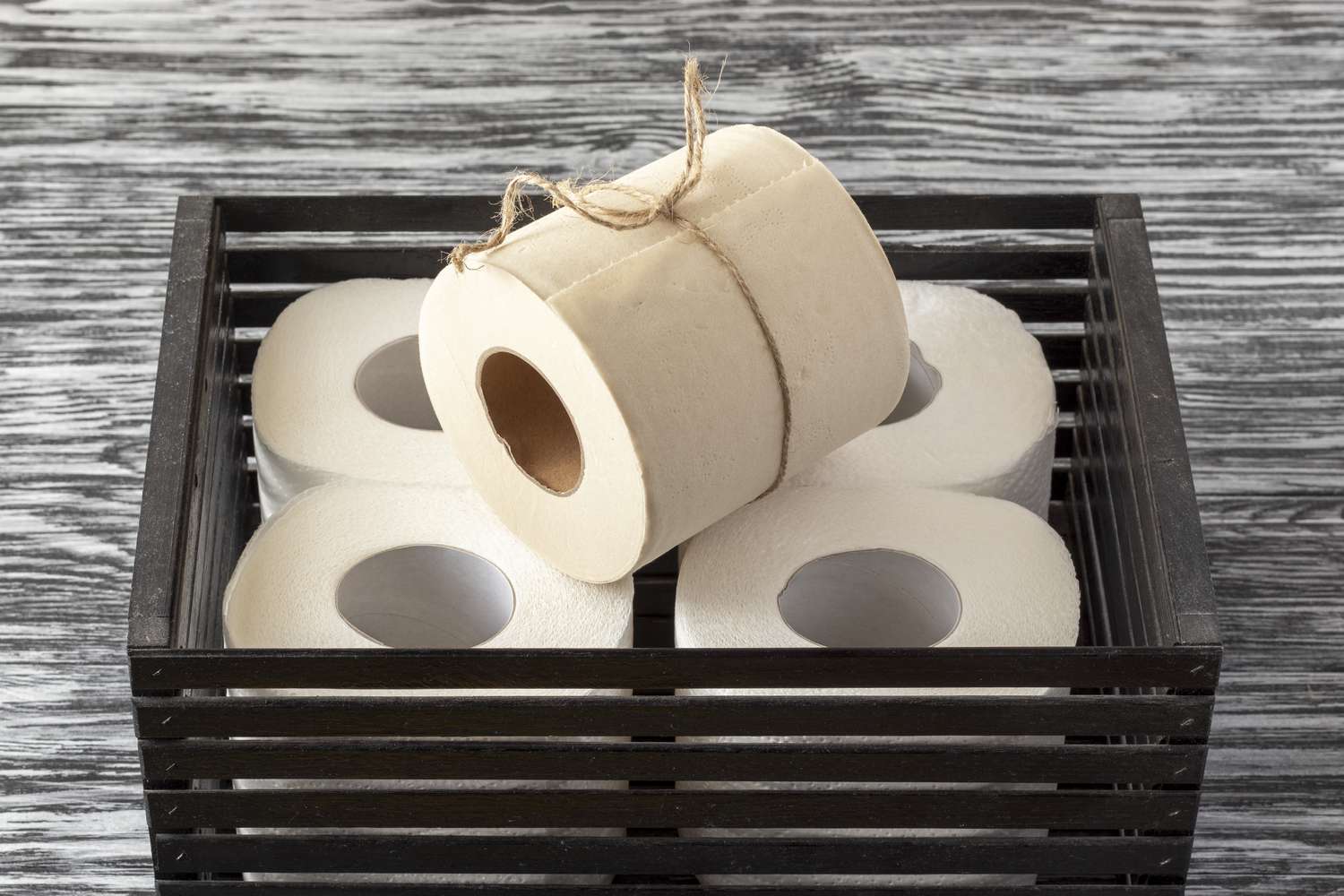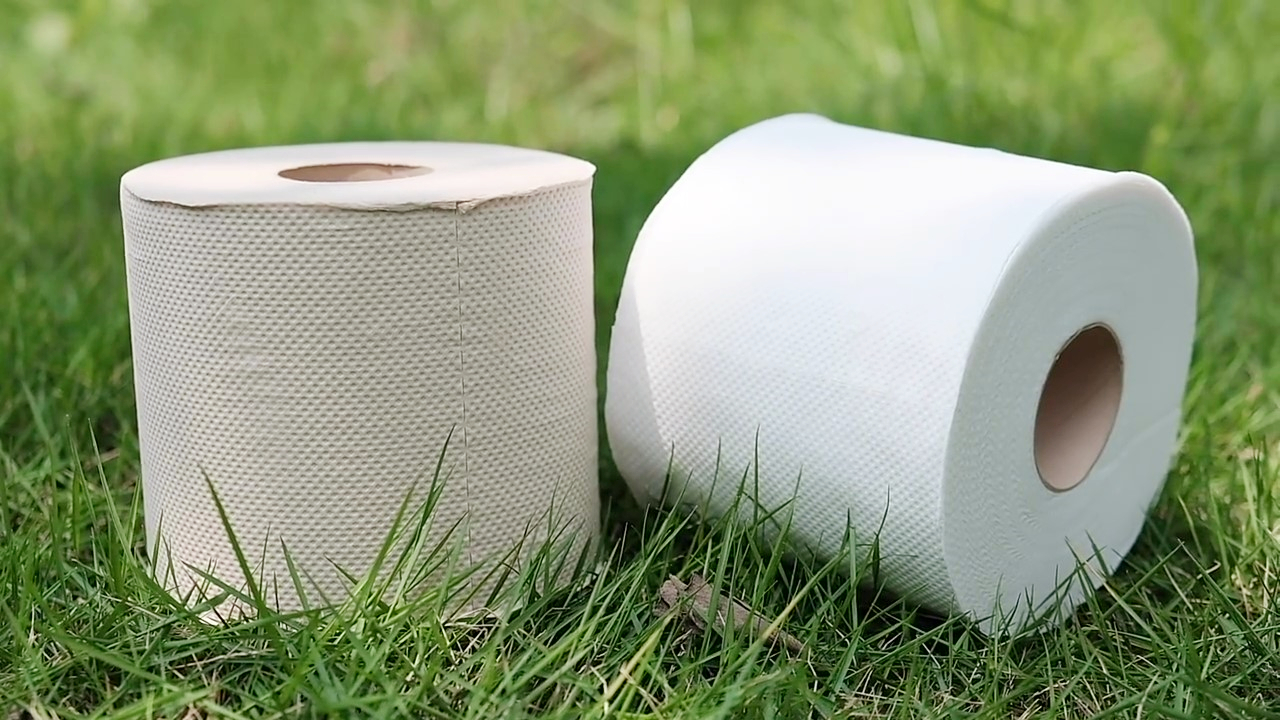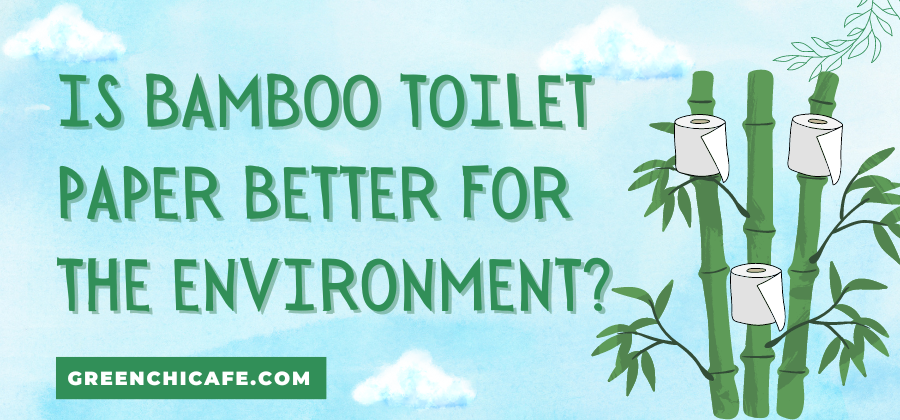Many consumers choose bamboo toilet paper believing it is a more sustainable option than tree-based paper.
But does bamboo TP offer significant environmental advantages?
This article examines the sourcing, manufacturing, carbon footprint, and biodegradability of bamboo toilet paper to determine if it provides meaningful green benefits.
Is Bamboo Toilet Paper Better for the Environment?

While bamboo cultivation has sustainability advantages, intensive manufacturing processes negate many of bamboo toilet paper’s environmental benefits over tree paper.
Overall, recycled toilet paper has a lower carbon footprint and environmental impact than virgin pulp bamboo toilet paper.
Key Points
- Bamboo farming uses less water than tree pulp, but processing water usage is comparable.
- Manufacturing bamboo toilet paper still requires extensive chemical pulping and bleaching.
- Carbon emissions are similar between bamboo and virgin tree toilet paper.
Does Bamboo TP Use Less Water Than Tree TP?

Bamboo shoots are durable plants that are a main staple food for pandas.
But is it a more eco-friendly source material for toilet paper?
Bamboo is touted as requiring minimal irrigation and using 10 times less water to grow than trees.
However, the water footprint also includes pulp processing, which reviews find is comparable to bamboo and tree toilet paper.
Recycled paper uses the least water overall since no cultivation is required.
While bamboo farming needs less irrigation, water savings are reduced during energy-intensive manufacturing processes to produce pulp and paper.
Is Bamboo TP Manufacturing More Sustainable?
Bamboo toilet paper production involves chemically-intensive pulping using harsh solvents to break down tough lignin and cellulose fibers.
Tree TP also utilizes chlorine bleaching.
However, sustainable forestry standards can ensure responsible harvesting.
One analysis found bamboo toilet paper’s production impacts were over twice that of recycled paper.
Ultimately, manufacturing processes that make toilet paper from either bamboo or tree pulp are chemically intensive.
Efforts to reduce the use of toxic chemicals are still needed industry-wide.
Does Bamboo TP Have a Smaller Carbon Footprint?
Bamboo grows rapidly, potentially sequestering more carbon in biomass.
But studies find converting bamboo forests to plantations negates carbon benefits.
Processing bamboo pulp into paper products like TP generates greenhouse gases comparable to virgin tree paper.
However, bamboo TP may emit 30% less CO2 than virgin tree paper.
Overall carbon emissions depend largely on energy sources used during manufacturing.
Maximizing recycled content while using renewable energy offers the lowest footprints for any TP regardless of fiber source.
Is Toilet Paper From Bamboo Sustainably Sourced?
Bamboo thrives naturally without pesticides when grown responsibly.
However, large-scale bamboo monoculture plantations face issues like soil depletion seen in conventional forestry.
Responsible sourcing certifications ensure bamboo harvests do not damage forest ecosystems or wildlife.
But audits found even certified bamboo originates from intensively managed plantations rather than natural forests.
Consumers should scrutinize bamboo TP sourcing to guarantee sustainability claims.
When responsibly grown, bamboo can be a reasonably sustainable fiber source.
Does Bamboo TP Decompose Faster After Use?
Yes, bamboo toilet paper will fully biodegrade in landfills faster than tree paper.
The average bamboo TP takes around 2-3 months to fully decompose versus nearly a year for virgin pulp TP.
Bamboo lacks lignin, the tough woody polymer reinforcing tree fiber walls.
This allows microbes and enzymes to break down the simpler cellulose and hemicellulose fibers in bamboo TP quicker.
However, municipalities should still aim to divert all TP from landfilling through composting programs regardless of fiber source.
What Factors Most Affect Bamboo TP Sustainability?
While the bamboo plant has sustainability advantages, manufacturing processes largely determine TP’s environmental impacts.
Factors include:
Energy sources: Renewables like solar reduce carbon footprints.
Bleaching processes: Chlorine-free production avoids dioxins.
Sustainable certification: Audits ensure responsible growing and harvesting.
Recycled content: Maximizing recycled material reduces waste.
Manufacturing efficiency: Optimizing processes lower resource consumption.
With innovative manufacturing powered by renewable energy, bamboo TP can offer sustainability benefits over virgin tree TP.
But currently, recycled TP has the lowest impact overall.
What is the Downside of Bamboo Toilet Paper?
Some downsides exist regarding bamboo toilet paper’s sustainability:
Large bamboo monoculture plantations may deplete soils and hinder biodiversity, like tree plantations.
Responsible management is key.
Bamboo paper still requires intensive chemical processing with solvents for pulping and bleaching, generating pollutants.
While bamboo farming uses less water than tree pulp cultivation, manufacturing water usage is comparable to making paper.
Carbon emissions are similar between bamboo and tree-based toilet paper due to the energy used in manufacturing.
Some “bamboo” toilet paper contains a blend of bamboo and wood pulp rather than 100% bamboo.
Without proper recycling programs, bamboo TP still ends up in landfills and waterways like conventional TP.
Uncertified bamboo may support unsustainable forest conversion to plantations.
With care taken to responsibly source 100% bamboo and implement green chemistry, these downsides can be mitigated, making bamboo TP an eco-friendly choice.
Does Bamboo Toilet Paper Help the Environment?
Bamboo toilet paper must be thoroughly evaluated to gauge true environmental benefits versus tree paper.
Responsible bamboo cultivation supports sustainable forestry.
However, manufacturing processes determine much of the product’s impacts.
Virgin pulp bamboo TP may emit 30% less CO2 but is comparable to tree TP.
Opting for greener energy and bleaching processes improves sustainability.
But currently recycled TP has lower footprints than bamboo overall.
Consumers should look for bamboo TP with recycled content, chlorine-free bleaching, and responsible forestry certifications to ensure meaningful sustainability.
While bamboo TP shows promise, manufacturing improvements must come to fully realize lasting environmental advantages.
What Type of Toilet Paper is Best for the Environment?
The most eco-friendly toilet paper contains 100% recycled content from post-consumer sources like offices and homes.
This eliminates tree harvesting and waste while lowering water and energy footprints since no virgin pulp cultivation is required.
Agricultural residue TP and tree-free bamboo TP are next preferred.
Bleaching processes should be chlorine-free; green energy use helps further.
Responsible forestry certification ensures sustainability.
Overall, maximizing recycled material while greening manufacturing offers the lowest environmental impacts.
But no TP option is perfect, necessitating continuous efficiency gains industry-wide.
Consumers can help by choosing recycled TP and supporting innovations in sustainability.
What Toilet Paper is Least Harmful to the Environment?
The least environmentally impactful toilet paper contains 100% recycled paper fiber.
Recycling already-made paper products into new TP generates around 35% less greenhouse gas emissions compared to virgin pulp TP from either bamboo or tree sources.
It also utilizes significantly less water and energy since no harvesting of raw materials is needed.
Agricultural residue TP is another low eco-impact option.
But virgin TP requires intensive resource use for pulp cultivation and processing. Responsible bamboo or Forest Stewardship Council-certified tree fiber help.
Overall, increasing recycled content while pursuing green chemistry offers the least damaging TP for the planet.
Key Takeaways:
- Responsible bamboo cultivation does support sustainable forestry.
- However, manufacturing processes must be improved and greenified before bamboo TP can provide decisive environmental advantages over recycled or tree-based TP.
FAQ
Can Bamboo Be Sustainably Farmed?
Yes, bamboo can be sustainably grown without chemical inputs when responsibly managed. But large plantations may deplete soils. Certification helps ensure sustainability.
Is Bamboo TP Completely Biodegradable?
Yes, bamboo toilet paper will fully biodegrade within months in landfills or composts due to simpler fiber components versus wood pulp.
Does Recycled TP Use Less Water?
Yes, recycled toilet paper uses far less water overall since no cultivation is required, just re-pulping and de-inking recovered paper fiber.
GreenChiCafe shares eco-tips for greening your home and lifestyle.
Visit our site to learn more about sustainability.
